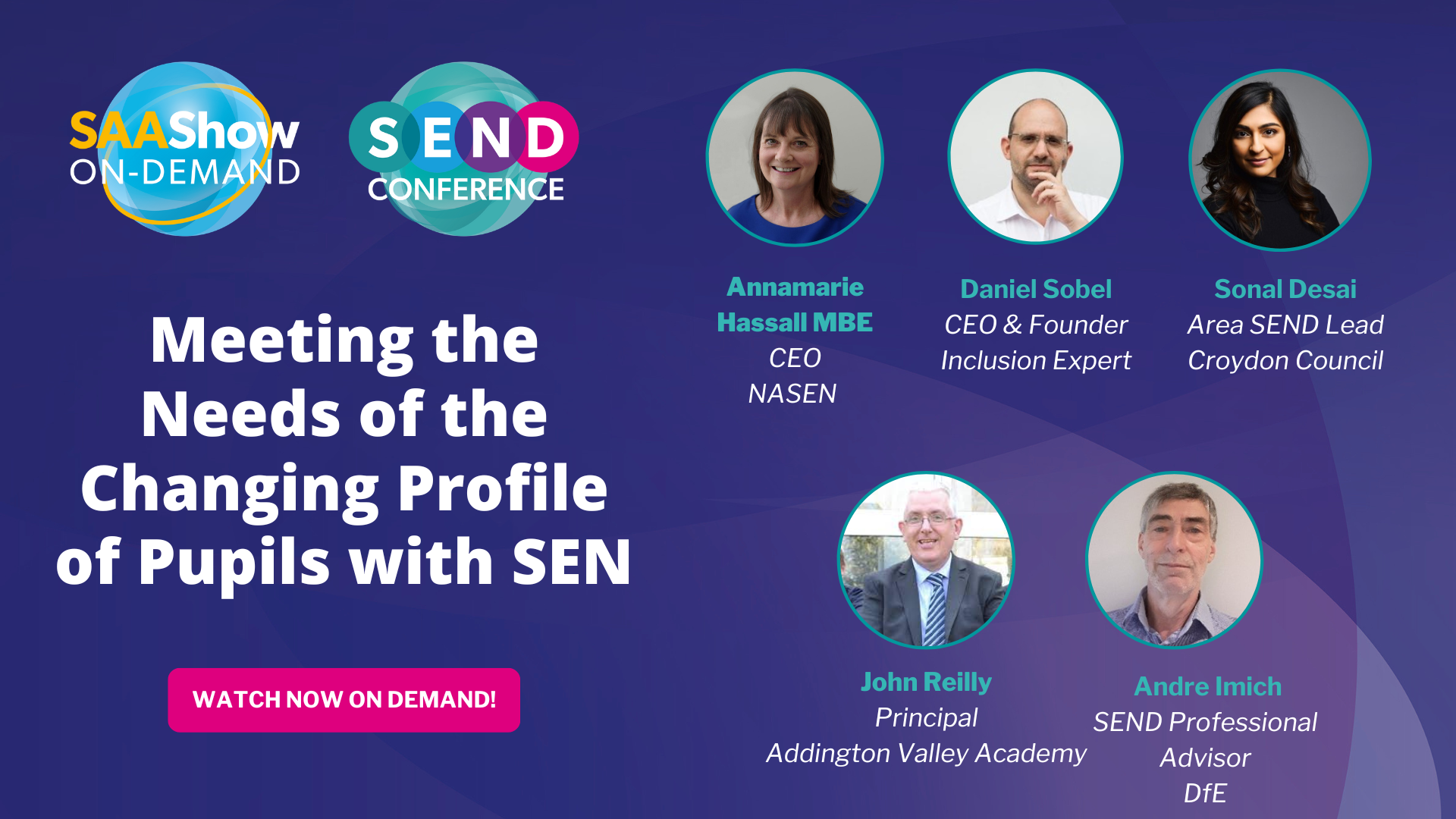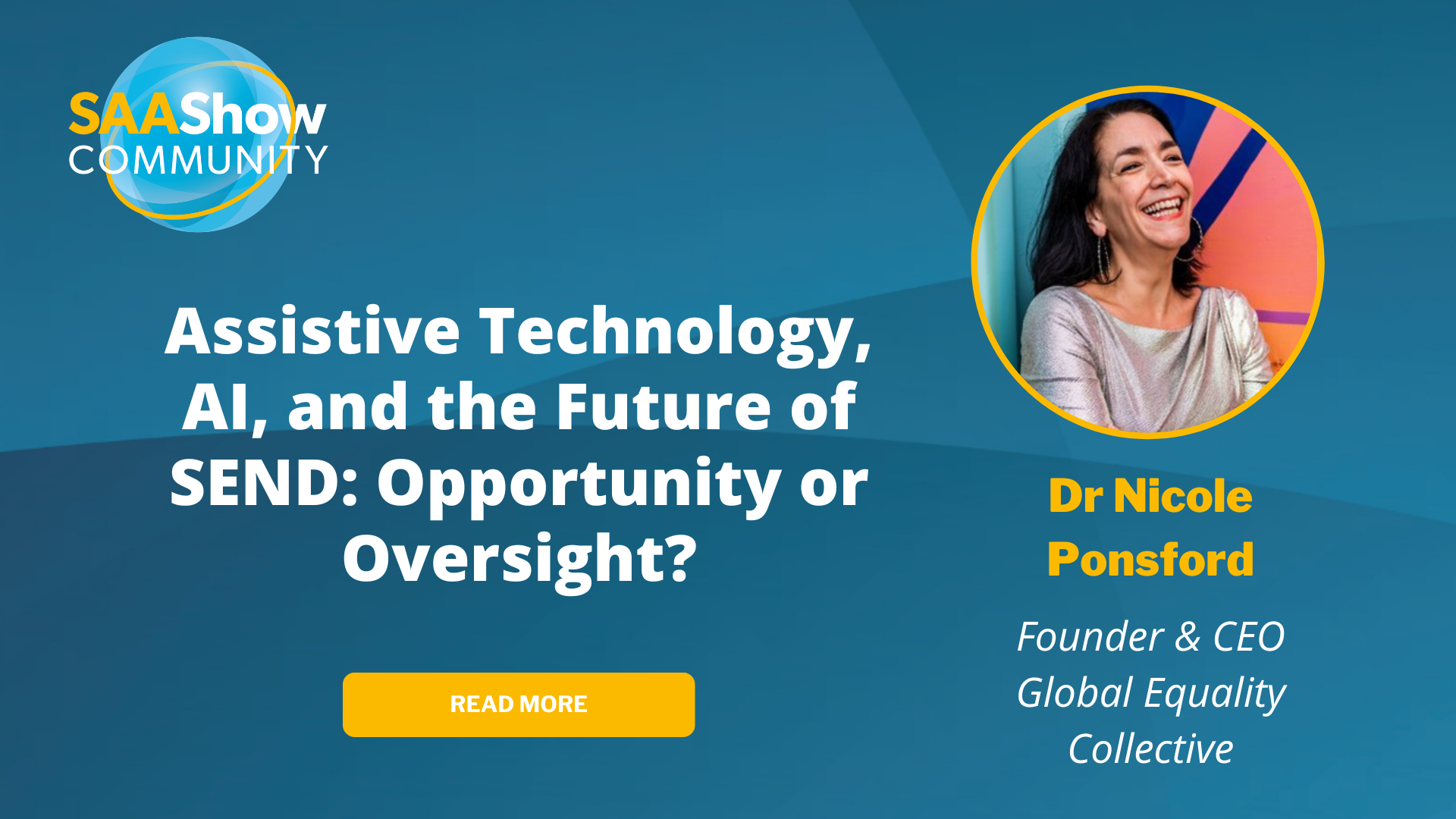What Do SEN and SEND Mean? SEN Code Abbreviations
What Do SEN and SEND in Schools Mean?
SEN stands for Special Educational Need (SEN) and each special educational need (SEN) has a unique impact on a child or young person. Whilst SEND stands for Special Educational Needs and Disabilities.
However, the entire SEN process can be confusing as it’s full of acronyms that can be difficult to keep up with. This means that understanding them all can also be challenging.
What are the different SEN Codes?
To help with this we’ve compiled a list of some of the most common SEN and SEND codes. Each one also has an explanation for some further understanding - just click on the letters below to jump to that section.
A-D
ABA - Applied Behavioural Analysis
Applied behavioural analysis is a form of teaching for children with autism. The phrase ABA is typically used to refer to a technique of designing de-sensitisation methods which are focused on certain triggers for behaviour.
ADD - Attention Deficit Disorder
Attention deficit disorder is a neurological disorder which causes a range of behavioural problems, such as following instructions, completing tasks, social interactions and focusing on schoolwork.
ADHD - Attention Deficit Hyperactivity Disorder
Similarly to ADD (and often used interchangeably), attention deficit hyperactivity disorder is a special educational need and medical condition. A child or young person with ADHD has differences in brain activity and development which affects their attention-span, ability to sit still, focus, self-control and they tend to move around more frequently.
ASD - Autistic Spectrum Disorder
Autistic spectrum disorder is a special educational need which impacts social communication, the flexibility of thought and social interaction. It’s also increasingly referred to as autistic spectrum condition (ASC).
APD - Auditory Processing Disorder
Auditory processing disorder is a disability which affects how the brain interprets sound, usually resulting in a child or young person having special educational needs.
BOSS - Behaviour Outreach Support Service
A behaviour outreach support service works alongside schools, children and families in an outreach capacity. They support children and young people who might experience behavioural difficulties or have an unmet social, emotional or mental health need.
BSP - Behaviour Support Plan
A behaviour support plan is a school-based document which is prepared to help support a pupil with behavioural difficulties. It’s often the starting point for a child or young person with special educational needs.
CAMHS - Child and Adolescent Mental Health Service
This is a specialist part of the NHS which provides assessment and treatment when children and young people have emotional, mental health or behavioural difficulties. CAMHS can often be very important when securing support for special educational needs and disabilities.
CELF - Clinical Evaluation of Language Fundamentals
A CELF test if used by speech and language therapists to assess a child or young person’s language ability and diagnose language disorders. Once the test works out the level of difficulty, it indicates the level of support they need for their special educational needs.
E-H
ECLIPS - Extended Communication and Language Impairment Provision for Students
ECLIPS focuses on specific speech and language disorders. The speech and language therapists work closely with the identified children, young people, parents, teachers and teaching assistants to help them develop - tailored to their evolving needs.
EHC - Education, Health and Care
An EHC plan describes a child or young person’s special educational, health and social care needs. It explains the extra help that will be given to meet those needs and how it will help support the child or young person to reach their full potential.
EP - Educational Psychologist
An Educational Psychologist observes a child or young person in class and perhaps at play. They’ll also look at classwork, talk to them and run tests to check their skills and intellectual development if a child isn’t developing or learning as they should.
ESCO - Early Support and Care Coordination
ESCO provides early help provision for children and young people. This service is committed to improving the delivery of services for disabled children, young people and their families through care coordinations and drop-in clinics.
EWO - Education Welfare Officer
The Educational Welfare Officer ensures the wellbeing of all children in education. Their main area of focus tends to be offering support to schools with issues regarding attendance.
HI - Hearing Impairment
HI is a disability which affects how sound travels through the ear to the brain, commonly resulting in special educational needs.
I-L
IBP - Individual Behaviour Plan
An IBP is a school-based document to support a pupil with behavioural difficulties, which can be a sign of special educational needs.
IEP - Individual Education Plan
An IEP is another school-based document which records, tracks and reviews the support a child or young person with special educational needs receives in school. All children with a Statement of Special Educational Needs must have an IEP.
IPP - Individual Pupil Profile
An IPP is a detailed document which will guide you through a series of observations and assessments, highlighting a pupil’s strengths, weaknesses and any special educational needs they might have.
LO - Local Offer
A local offer is a publication prepared, updated and reviewed by the local authority. It details the support it expects to be available for children with special educational needs and disabilities.
LSA, TA or LA - Learning Support Assistant, Teaching Assistant or Learning Assistant
These abbreviations tend to crossover, but the premise is the same. An LSA, TA or LA is a staff member who supports the class and teacher. In some cases, children with special educational needs or disabilities may have their own LSA to help them access learning.
M-P
MLD - Moderate Learning Difficulties
Moderate learning difficulties are challenges when accessing education and a form of special educational needs.
MSI - Multi-Sensory Impairment
Children and young people who have a multi-sensory impairment have both vision and hearing loss which impacts all areas of learning. Children and young people can also need extra support to learn to communicate and develop socially.
OCD - Obsessive Compulsive Disorder
OCD is a disorder which causes obsessive thoughts with associated behavioural difficulties. This can result in special educational needs which require additional support.
ODD - Oppositional Defiant Disorder
ODD is a disorder which causes a child or young person to respond negatively and uncooperatively, especially with figures of authority. Like OCD, ODD also often results in special educational needs.
OT - Occupational Therapist
An Occupational Therapist is a medical professional that assesses and treats physical and psychiatric conditions using activities to limit the impact of the disability and promote independence. They’re often really important in assessing and supporting those with special educational needs.
PECS - Picture Exchange Communication System
PECS is a method of communication using pictures. It’s helpful for children with communication-based special educational needs and mainly used to support children with autism.
PDA - Pathological Demand Avoidance
PDA is a disability linked to autism. It causes a child or young person to have anxiety when presented with a demand and requires more support.
PMLD - Profound and Multiple Learning Disability
PMLD is a collection of disabilities which results in complex special educational needs. Children with PMLD will need added support in the form of a Statement of Special Educational Needs or an EHC plan.
Q-T
SALT/SLT - Speech and Language Therapists
SALT or SLT assess and treat speech, language and communication problems in people of all ages so they can communicate better. They also work with those suffering from eating and swallowing problems and play an important role in assessing children and young people.
SEN - Special Educational Needs
If a child or young person is struggling at school or college and they need extra support, they’re likely to have special educational needs.
SEND - Special Educational Needs and Disability
A child or young person has special educational needs and disabilities if they’re suffering from learning difficulties and/or a disability which means they need special health and education support.
SENCO - Special Educational Needs Coordinator
A SENCO is a staff member who’s responsible for coordinating additional support for pupils with special educational needs and disabilities. Working with parents, teachers and other professionals, the SENCO is responsible for requesting the involvement of relevant services a child or young person might need.
SLCN - Speech, Language and Communication Needs
SLCN is an umbrella term which describes difficulties such as finding it difficult to listen, understand and communicate with others. As each child or young person has a unique combination of strengths, it means every child with SLCN is different.
SLD - Severe Learning Difficulties
Children and young people with severe learning difficulties are likely to find it difficult to understand, learn and remember new skills. Their intellectual and cognitive impairment, combined with possible sensory, physical, emotional and social difficulties, means it can be challenging for them to follow the curriculum without substantial support.
SpLD - Specific Learning Difficulty
SpLD is a term referring to a difference in difficulty with certain learning aspects. Some of the most common SpLDs are ADHD and dyslexia which is usually reflected in a child or young person’s learning and day-to-day living. If a child or young person has SpLD, they’re deemed to have a severe learning disability.
STT - Specialist Teaching Team
Specialist teaching teams offer high-quality support to schools and colleges working with students with special educational needs and disabilities. They’re on-hand to provide advice and support to children, young people, schools and families to work on significant and complex needs.
U-Z
VI - Visually Impaired
Visual impairment is a disability relating to how visual signs are carried from the eye to the brain. A child or young person can require special educational needs because of this disability.
When it comes to safeguarding children and young people in schools, understanding SEN codes is just one vital area you need to be aware of. To help you stay fully prepared on safeguarding and child protection principles, we’ve created a comprehensive safeguarding handbook.
If you'd like to learn more about SEN, hear the latest innovations from solutions providers and network with your peers then there is no better place than at the Schools and Academies Show being held in Birmingham on the 20th November. You can view the agenda for the day: https://www.schoolsandacademiesshow.co.uk/ and register for the show by clicking on the banner below.



.jpg)
